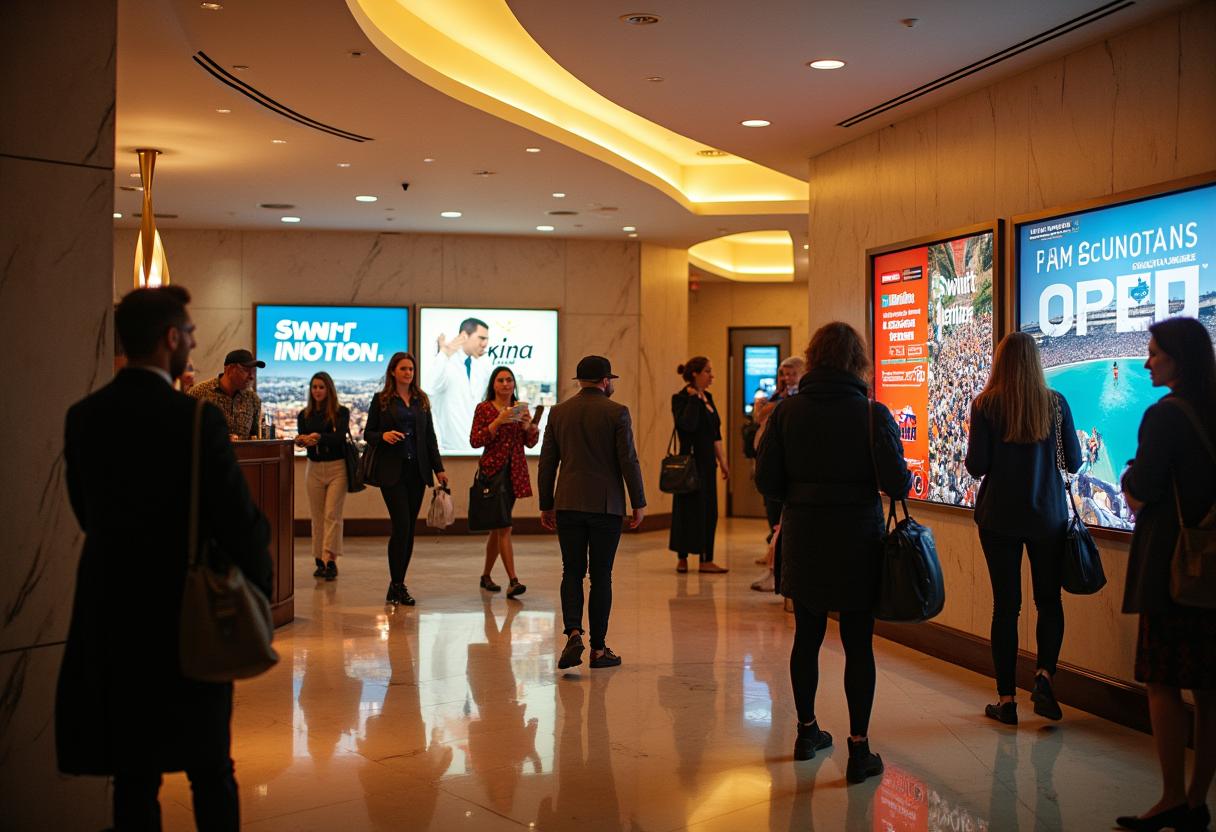Australia’s hotel sector navigated the first half of 2025 with a notable increase in occupancy, largely propelled by a resurgence in corporate travel and a vibrant domestic tourism market. However, this positive trend in visitor numbers was paradoxically accompanied by a decline in room rates across several major cities, signaling a complex shift in the nation’s dynamic hotel landscape. This balancing act highlights the challenges and strategic adaptations hoteliers are implementing amidst evolving economic conditions.
A significant catalyst for this demand surge has been Australia’s packed calendar of high-profile events. Iconic spectacles such as the Australian Open, the Melbourne Comedy Festival, Formula 1, and Sydney’s Vivid festival have played a pivotal role in invigorating the country’s visitor economy, drawing both international and domestic guests. These major events have been instrumental in underpinning growth in Australian hotels occupancy, filling rooms, and generating much-needed revenue for the sector.
While cities like Melbourne and Sydney experienced abnormal spikes in hotel bookings due to these cultural and sporting attractions, demonstrating a strong appetite for travel, the overall trend points to a broader recovery in the tourism industry, which faced unprecedented challenges during the global pandemic. The Australian government, through Tourism Australia, has actively promoted the nation’s tourism calendar, aiming to direct event-driven spending towards the hotel sector, thereby aiding the broader economic recovery.
Despite the positive momentum in occupancy, room rates presented a more varied picture. In some key Australian cities, including Melbourne and Sydney, average room rates saw a slight decline in the first half of 2025 (0.9% and 0.2% respectively). This reduction, while potentially concerning at first glance, reflects a deliberate strategy by hoteliers to prioritize filling rooms and capturing market share, especially with the ongoing upturn in business travel.
This contrasts with regions like the U.S. Pacific, where hotel prices have generally seen an increase over the same period, with the average U.S. room rate rising modestly by 0.8%. This regional disparity underscores the unique market dynamics at play within Australia. Interestingly, other Australian markets, such as Perth, achieved the highest occupancy at 79.9%, successfully maintaining both higher rates and strong demand, showcasing regional resilience.
However, the sector is not without its significant challenges, primarily stemming from escalating operational costs. Australian hotels are grappling with substantial increases in expenses, including energy, insurance, and labor. Industry experts confirm that these rising costs are exerting considerable pressure on profit margins, forcing hoteliers to make difficult decisions regarding room rates and their approach to attracting guests.
James Goodwin, chief executive of Accommodation Australia, acknowledged the incremental growth but noted that the overall performance hadn’t fully met industry expectations. He emphasized the crucial role of international tourism, particularly from established source markets, as a vital component for the continued recovery and sustained success of Australia’s hotel industry. This highlights the long-term strategic importance of global travel engagement.
Among the regional standouts, Hobart and Perth demonstrated particularly strong performance. Hobart’s market growth remained robust, boasting a 79.3% occupancy rate, a significant 5.6% increase from the previous year, partly attributed to new developments like the DoubleTree by Hilton. Perth, maintaining its appeal to both business and leisure travelers despite its geographic isolation, recorded a strong 79.9% hotel occupancy, indicating steady growth in its market.
The surge in corporate travel, including MICE (Meetings, Incentives, Conferences, and Exhibitions) business, has been a key driver, particularly boosting bookings during traditionally slower weekdays. While some regions have softened room rates, this strategic adjustment has successfully filled rooms, particularly in major hubs like Sydney and Melbourne, securing occupancy from business travelers even at a lower average rate. The Australian hotel sector faces a delicate balancing act, aiming to sustain hotel occupancy growth while navigating rising operating expenses and adapting to the evolving demands of both leisure and business travel.






Leave a Reply